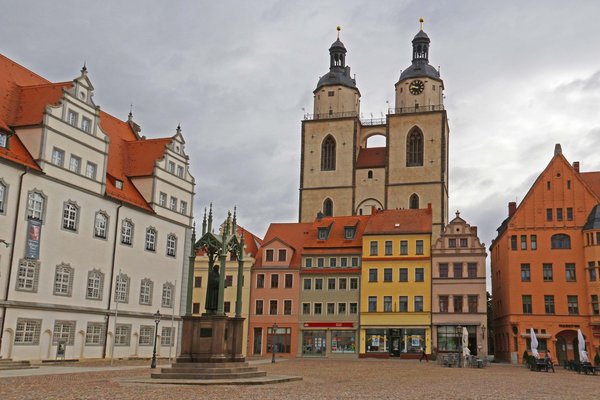Germany
Luther Memorials
The Luther Memorials in Eisleben and Wittenberg bear testimony to the Protestant Reformation.
These two towns are closely related to the lives of Martin Luther and Philipp Melanchthon. The Memorials include sites associated with their lives as well as the castle church where, on 31 October 1517, Luther posted his famous '95 Theses', which launched the Reformation and a new era in the religious and political history of the Western world.
Community Perspective: “an odd inscription, it is more of interest for what happened here than what still exists”. And “it isn’t actually “that door” but a 19th century bronze replacement which doesn’t attempt any authenticity”. The famous Schlosskirche in Wittenberg is still an interesting place to visit, especially for the tombs of Luther and Melanchthon.
Site Info
Official Information
- Full Name
- Luther Memorials in Eisleben and Wittenberg (ID: 783)
- Country
- Germany
- Status
-
Inscribed 1996
Site history
History of Luther Memorials
- 1996: Inscribed
- Inscribed
- Type
- Cultural
- Criteria
- iv
- vi
Links
- UNESCO
- whc.unesco.org
- Official
-
- eisleben.eu — Eisleben
- lutherstadt-wittenberg.de — Wittenberg
- Related
-
- en.wikipedia.org — Wiki on Luther
All Links
UNESCO.org
- whc.unesco.org — whc.unesco.org/
Official Website
- eisleben.eu — Eisleben
- lutherstadt-wittenberg.de — Wittenberg
Related Resources
- en.wikipedia.org — Wiki on Luther
Community Information
- Community Category
- Religious structure: Christian
Travel Information
Saxony Anhalt hotspot
Berlin hotspot
Recent Connections
-
Perfect Inscriptions
1996 -
Berlin hotspot
Wittenberg: "The average journey time b… -
Tycho Brahe
Tycho studied for some periods in Witte…
Connections of Luther Memorials
- Individual People
-
-
Tycho Brahe
Tycho studied for some periods in Wittenberg; he was also markedly influenced by Lutheran philosophical movements. He always enjoyed friends or colleagues there, and he and his family temporarily found refuge at Melanchthon's house when he was in the process of relocating from Denmark to Bohemia.
-
- Geography
- History
-
-
Historical Events
on 31 October 1517, Luther posted his famous '95 Theses' here -
Located in a Former Capital
Wittenberg was a capital of Duchy of Saxe-Wittenberg (1260-1356) -
Judensau
Wittenberg: On the facade of the Stadtkirche from 1305. "It portrays a rabbi who looks under the sow's tail, and other Jews drinking from its teats. An inscription reads "Rabini Shem hamphoras," gibberish which presumably bastardizes "shem ha-meforasch" " WikiSee en.wikipedia.org
-
Birthplaces
Location 783-001, Luther's birthplace Eisleben, Lutherstrasse 16, Germany
-
- World Heritage Process
-
-
Perfect Inscriptions
1996 -
Extended from original TWHS
To include Eisleben -
Reduced from broader TWHS
Originally, the entire “Altstadt” (historic center) of Wittenberg was on the tentative list, and only four specific buildings related to Luther have been included in the world heritage site of the Luther memorials -
Extensions on Tentative List
Luther memorials in Saxony-Anhalt, Saxony, Bavaria and Thuringia (2015)
-
- Religion and Belief
-
-
Protestantism
Launching of Reformation
-
- Human Activity
- Constructions
-
-
Tombs
Tombs of Luther and Melanchton are in the church of Wittenberg
-
- WHS on Other Lists
-
-
Memory of the World
Documents representing the beginning and the early development of the Reformation initiated by Martin Luther (2015)
-
- Timeline
-
-
Built in the 16th century
on 31 October 1517, Luther posted his famous '95 Theses'
-
- WHS Hotspots
-
-
Saxony Anhalt hotspot
2h by train to Wittenberg, 1.5h to Eisleben -
Berlin hotspot
Wittenberg: "The average journey time by train between Berlin and Lutherstadt Wittenberg is 59 minutes, with around 31 trains per day." (Trainline)
-
- Science and Technology
- WHS Names
-
-
Named after individual people
Reformer Martin Luther
-
News
No news.
Recent Visitors
Visitors of Luther Memorials
- Adrian Turtschi
- Afshin Iranpour
- Alexander Barabanov
- Alexander Lehmann
- Ali Zingstra
- A. Mehmet Haksever
- Ana Lozano
- Anna Wludarska
- Argo
- AS
- Aspasia
- a.thum
- Atila Ege
- AYB
- Bamse
- BaziFettehenne
- Bernard Joseph Esposo Guerrero
- Bigboss99
- Bill Maurmann
- Bin
- Birgitte Sørensen
- Bodil Ankerly
- Bropyk
- Can SARICA
- Caspar
- Cezar Grozavu
- Christer Sundberg
- Christian Wagner
- christof
- Christoph
- Christravelblog
- Claire Bradshaw
- Clyde
- Cobaltrage
- Colossus
- Csaba Nováczky
- ctravel
- CugelVance
- Dagmara
- Dani Cyr
- Daniela Hohmann
- Daniel Chazad
- Daniel Gabi
- Dimitar Krastev
- Dimitrios Polychronopoulos
- Dirk-pieter
- Dolemite92
- Dorejd
- Dr. Caligari
- Echwel
- Elia Vettorato
- Els Slots
- erdsaumnaht
- Erik Jelinek
- Errol Neo
- Eva Kisgyorgy
- Evgenii
- fabi-ddorf
- Fan Yibo
- Farinelli
- Federico P.
- Feldhase
- Femke Roos
- Filip Murlak
- FK
- Frederik Dawson
- FS
- Gary Arndt
- George Gdanski
- GeorgeIng61
- GerhardM
- Gernot
- Harald T.
- Harry Mitsidis
- henrik_hannfors
- heywhatever2
- Hubert
- Iain Jackson
- Ian Cade
- Ivan Rucek
- Jacob Choi
- Jakob F.
- janem
- Janina Lehmann
- janis
- Janos
- Jan-Willem
- Jan Zimmermann
- Jarek Pokrzywnicki
- Jasam
- Javier Coro
- Jay T
- Jens
- Jezza
- JobStopar
- Joel on the Road
- Jonas Hagung
- Jonas Kremer
- Jon Eshuijs
- Joyce van Soest
- Juha Sjoeblom
- KarenBMoore
- Karito Vies
- Kasia M.
- Kbecq
- Ken DJ
- Kerstin Lange
- Klaus Freisinger
- Knut
- Kristin
- Krzysztof B
- Lameduck99
- Lara Adler
- lichia
- Lisu Marian
- ljowers
- Loic Pedras
- Luboang
- Ludvan
- Luis Filipe Gaspar
- lynnz317@aol.com
- Maciej Gil
- Maciej Gowin
- Mahuhe
- Małgosia Łupicka
- Manuelfunk
- marcel staron
- MarcoB_0
- Martin
- Martina Rúčková
- Matejicek
- MaxHeAnouBen
- MaYumin
- MH
- Michael Novins
- Michael Turtle
- Mikko
- Mikko Syrjä
- Miloš Tašković
- miri2808
- Mo-han Je
- Mohboh
- nan
- Nick M
- Nicole Lampos
- Nihal Ege
- Nikolay Marinov
- PabloNorte
- Patrik
- Paul Schofield
- PeterH
- Peter Lööv
- Petteri
- Philipp Leu
- Philipp Peterer
- Piotr Wasil
- PlacesWeHaveBeenTo
- Potsdamer
- Purrfect
- Rafał Kałczuga
- Ralf Regele
- Randi Thomsen
- ReallyDeepThoughts
- Reza
- Rick Ohm
- Roger Ourset
- Roman Bruehwiler
- Roman Raab
- Rudegirl
- Sabrina Liebehentschel
- Sandmann15
- Schnitzel
- Sebasfhb
- Sehnsuchtsbummler
- serghei.belous
- Sergio Arjona
- Shandos Cleaver
- shoaibmnagi
- sncjob
- Solivagant
- Stanislaw Warwas
- Stijn
- Svein Elias
- Szabolcs Mosonyi
- Szucs Tamas
- Tamara Ratz
- Taotao Chen
- Tarquinio_Superbo
- Tcchang0825
- Thomas Buechler
- Thomas van der Walt
- Thorben
- Tom Flaten
- Tommy W
- tony0001
- triath
- Tsunami
- Valentina
- Vanessa Buechler
- VB73
- Vincent Cheung
- VLabhard
- WalGra
- Walter
- Westwards
- Wojciech Fedoruk
- wrung24
- Xiong Wei
- Xiquinho Silva
- Yang Chengyu
- YaroMir
- Yevhen Ivanovych
- Zhenjun Liu
- Zoë Sheng
- Zos M
Community Reviews
Show full reviews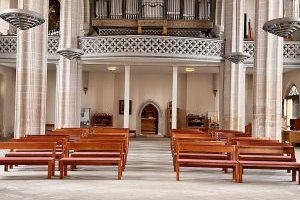
This is a hard one. There is no doubt that the reformation had a huge effect on European and World history, not only changing religious practices but the society, education, politics. In that respect it totally deserves its place on the list. The great question is how you represent a spiritual and intellectual movement with a building or a group of buildings if you do not want to downgrade it to an intangible heritage. How to represent such a complex movement stretching over many countries and several centuries? UNESCO or rather the German nomination chose to concentrate on the probably most famous reformer Martin Luther. The 95 theses that he allegedly hammered at the portal of the castle church in Wittenberg may be the most famous single moment in the history of reformation. So far, so good. There are several problems with this choice: Luther was certainly not the first protestant: Men like John Wyclif formulated basically all the ideas and church criticisms as Luther but almost 200 years earlier! A bit later Jan Hus had a huge, even political impact. Similarly to Luther who was ordered to Augsburg to renounce his beliefs Hus was ordered to the council in Constance with a safety promise but then burnt on the stake. (The council of Constance was – with and beyond the thrilling story of Hus - such great event of incredible influence that you could very easily make a good WH nomination out of this! And much of the original …
Keep reading 0 comments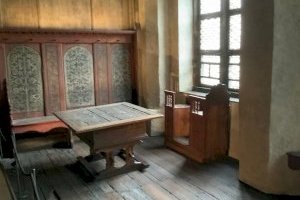
It’s now eight years after the 500 year celebrations of Martin Luther’s public display of his 95 theses nailed to the door of the church at the Wittenberg castle. Calm has returned to both Wittenberg and Eisleben where six sites make up the Luther memorial WHS. In both locations the focus is not so much on buildings and architecture as most of the original structures have undergone substantial changes over the centuries, but rather on the work, ideas and lasting impact of Martin Luther and his close companion Philipp Melanchthon.
Wittenberg can be reached easily by train or car, from Berlin or Dresden and other big cities in the east of Germany. We stayed at an hotel close to the Luther and Melanchthon houses. Both places can be visited in about two hours each and consist of modern parts and the historical buildings, largely revamped in different periods. Since a lot of writings have survived, both Luther’s and Melanchthon’s lives, teachings and tribulations, including their final hours are well documented and presented in the exhibitions.
The exhibition in the Luther House is dedicated to Martin Luther’s life, work and his influence with more than 1000 authentic objects, showing the daily life with his family, political and theological books and treatises that changed the world in the 16th century. While it displays the history of the Reformation quite well it’s not that convincing on the personal side of Luther’s life. The highlight is the Luther-Stube, which remains more or …
Keep reading 0 comments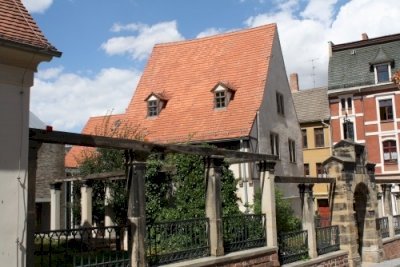
August 2018 - finally we visited the place where it begun and ended. Luthers Life!
The town is quite deserted, in the middle of nowhere, few young people not many shops, cafes etc, only some Luther museums.
The hot, dry summer made it even less attractive, But we were happy to have visited once. We did not pay the horendous entrance fees, but just had a glimspe from outside.
Wittenberg, the place of work and sucess, is more interesting. Its locacted in a whs hotspot, next to the Elbe river and more significant concerning reformation. I have visited Wittenberg in 2006, 2010 and 2012. The Schlosskirche, the Melanchton house, the University, all interesting places to visit and important places in history.
Keep reading 0 comments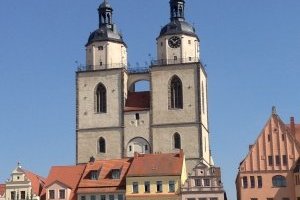
For anyone interested in history, this is a great site to visit, even though, as mentioned in some other reviews, the authenticity of some of the components is at least questionable. The famous Schlosskirche, for instance, was heavily damaged during the Seven Years' War, and the door where Luther posted his 95 Theses, and which can therefore be considered the birthplace of the Protestant faith, was destroyed by fire. What you can see now is just a 19th-century replica. The church itself is still quite impressive and an interesting place to visit (especially for the tombs of Luther and Melanchthon). Equally impressive is St. Mary's Church (the Stadtkirche or City Church, as opposed to the nobility's Castle Church), where Luther preached and where the first Mass in German was held - the famous Reformation Altar being the most important sight there. The remaining two components in Wittenberg are the Melanchthonhaus, with a beautiful Renaissance facade and a pretty garden, and the Lutherhaus, a former monastery where Luther lived as a monk and which today houses a museum on the history of the Reformation; some rooms are still very close to the original. Wittenberg is a very pretty town and all four sites are just a short walk away from each other. I also visited Eisleben, the place where Luther was born and died, but didn't spend any significant amount of time, and I enjoyed it rather less. It also has a nice historic centre, but the two buildings on the …
Keep reading 0 comments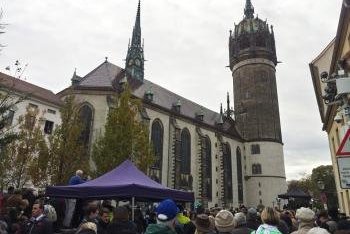
By total accident I paid my second visit to Wittenberg, Germany, on October 31, 2017, the day of the 500th anniversary of Reformation.
The navigation through the packed streets were very difficult, but I at least visited the 4 properties again so far included in the Wittenberg portion of this WHS. The extension has been proposed for this site.
The photo is the Castle Church, to a door of which Luther nailed his 95 theses.
On this day the people seemed most interested in seeing President Steinmeier and Chancellor Merkel, lining up behind the police fences for hours and hours.
This anniversary had more like a party atmosphere than a solemn one. I guess after all this was the 500th birthday party for the Protestant Church.
Keep reading 0 comments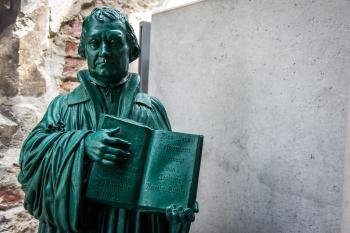
This is one of those WHS's where the reason for inscription is actually more about something that is hard to physicalise... so they just create a reason to use some buildings to represent the idea. As a result, I found it rather unimpressive.
Obviously the history of Martin Luther is extremely significant and the bonus of visiting the places included within this site is that you learn a lot about it. It wasn't a topic I knew a huge amount beforehand, so I appreciate that. However, I felt more like I was in a series of museums rather than seeing something of actual historical and cultural worth.
Personally, I found Wittenberg to be more enjoyable than Eisleben - but it was also a much more touristy town and there were a lot of people around. Still, everything in both sites is done very well and if you know what to expect, I don't think you'll be disappointed.
Keep reading 0 comments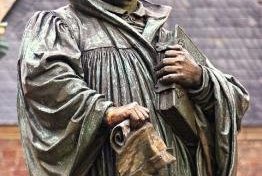
I visited this WHS in November 2014. I visited both Eisleben and Wittenberg. I decided to sleep over in Wittenberg as there's much more to see and do. Before the 500th anniversary of Reformation in 2017, however, I'd suggest you focus most of your visit in Eisleben. It lacks the tourist groups of Wittenberg and everything is open and without scaffolding. I visited Luther's birth house and the church where Luther was baptised. The interior of the church has been completely restored and given a modern touch with a "jacuzzi-like" baptism font in front of the old one with ripples reflecting on the church's walls. I also visited Luther's death house which is less interesting than his birth house (the info given there is much more structured and interesting). Luther's statue in the middle of Eisleben's square is particularly well made (picture). In Wittenberg, the highlight is the 95 Thesis Door (perfectly visible) and the Schloss Kirche which is undergoing major restoration works till 2017. The Luther museums in Wittenberg I found to be less interesting than those in Eisleben and most are undergoing restoration works too. If you have enough time, I'd recommend visiting Halle and it's huge church. It's well worth a visit.
Keep reading 0 comments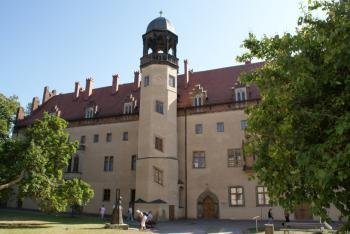
The sites in Wittenberg and Eisleben were inscribed for their connection to the life and work of Martin Luther and to the ideas of the Reformation rather than for the outstanding value of the monuments. I visited both towns in summer 2009. Both are medieval towns like many others in Central Europe, nothing special. Strangely enough, Eisleben was almost deserted, while Wittenberg was crowded with tourists, mainly from Japan and China. Probably they want to see all this famous door of the Schlosskirche. However, this is not the original from 1517, just like many of the other Luther Memorials that have been destroyed and rebuilt over the centuries. Wittenberg I liked better than Eisleben. I enjoyed the walk from the Schlosskirche to the Luther House passing the main square and the worth seeing Stadtkirche. The Luther House (photo), his former residence, now houses a museum on the history of the Protestant Reformation, which is certainly fascinating when one is interested in this part of history. The Luther Memorials are not my preferred kind of WHS. So I took it as a stopover between the visits of two of my favourite WHS in Germany, the Bauhaus Dessau and Classical Weimar.
Keep reading 0 comments
I used Lutherstadt Wittenberg as a base for visiting the many WHS in the area. Trains took me as far as Bad Muskau in the east and Eisleben in the west for day trips, as well as to Quedlinburg, Worlitz and Dessau.
Being rather ignorant of Luther and his activities I did learn a lot by visiting Wittenberg and Eisleben. But I wondered what the bus loads of Chinese and Japanese tourists visiting these sites made of it.
Architecturally the churches are rather austere, although I did like the decorated ceiling and pulpit of St Anne's church in Eisleben.
Keep reading 0 comments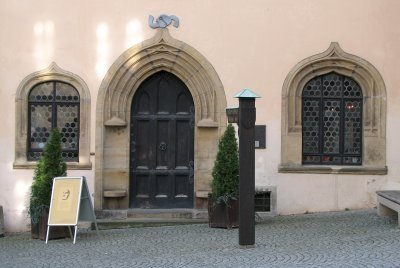
Driving from Quedlinburg to Eisleben, the landscape changes. First, one comes across a very large modern windmill park. Then there are man-made hills, like tumuli: the remains of the mining industry. This area already was used for silver and copper mining during the 15th century, when Martin Luther was born here. Luther’s father worked in the industry too.
The town of Eisleben looked extinct when I explored it on a Saturday afternoon. Fortunately, I did find a few signs posting to the Luther sites: the statue on the Market, the house where he was born, and the one where he was buried. Two churches in town also have Luther connections: in the Church of St. Peter and Paul he was baptised, and in the Church of St. Andrew, he preached for the last time (just 3 days before his death).
Luther’s birth house is undergoing restoration at the moment (until March 9, 2007), both on the inside and outside. I did visit the small museum in the house where Luther died. The bed where it happened is still there (ahum, probably a replica). On the first floor, a number of early Bibles in the German language are exhibited. They reflect Luther’s work in translating the Bible from Greek into vernacular German. Also, the role of the printing press which enabled to spread of ideas far more quickly (a similar revolution as the internet nowadays) is highlighted.
The level of authenticity of these buildings in Eisleben is rather …
Keep reading 0 comments
This is one of those relatively few WHS which are inscribed primarily because an event of significant historical importance occurred there (I reckon there are only about 10 of these on the list). Wittenberg is one such place – seeing “that door” on the church where Luther nailed up the “95 Theses” is a very direct way of “connecting” with history as opposed to viewing a building or town/city which is just a “representative” of a style or period. In fact it isn’t actually “that door” but a 19th century bronze replacement which doesn’t attempt any authenticity and is decorated with the Theses themselves (photo) – and the church itself was seriously damaged during the 7 years war, largely rebuilt and again heavily restored late in the 19th century – but despite these changes the “link” with the past was still maintained in our mind.
Wittenberg is a reasonably attractive small town but, in all honesty, is nothing special in comparison with many other central European towns with “medieval” backgrounds – Michelin, usually a good “objective” judge in these matters, doesn’t even award a single star (out of a possible 3) to the town itself. It is only raised above this average statusby its “Lutheran” connections and the inscription only includes a limited number of buildings in the town. Places where he studied, discussed and preached, together with his tomb in the Church - but not a tree marking the place where he burnt the Papal Bull! Some sites are …
Keep reading 0 comments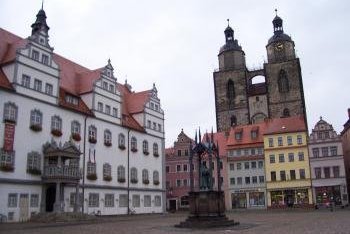
We visited Lutherstadt Wittenberg for a particularly cold November afternoon. The town itself was quite pretty but not at its best on an icy autumn day, I would guess it is a lovely place to wander around on warmer days but probably filled with tour busses.
There are three places specifically associated with Luther; the Stadtkirche, Schlosskirke and Lutherhaus, also included is the house of Luther's friend and contemporary Melanchthon.
Unfortunately we were unable to visit the Lutherhaus as a party consisting of 6 coach loads of tourists was decanted into it just as we arrived, I was a little disappointed as the exhibits are supposed to be a good introduction. However thanks to a excellent radio documentary by Melvyn Bragg on BBC Radio4 I had a pretty good grasp of the context. [http://www.bbc.co.uk/radio4/history/inourtime/inourtime_20061012.shtml]
The Schlosskirche had a surprisingly ornate interior for such a small protestant church, the ambience was slightly spoilt when the tour group entered all with cameras blazing. The door commemorating the nailing of the 95 theses was impressive, but it seems contentious as to whether this famous act ever happened.
I really liked the main square (picture) and spent a fair amount of time in the Stadtkirche, it is a really significant place as this was the platform from which the first protestant lectures were delivered, it also has a fine altarpiece by Lucas Cranarch the elder. It is interesting to see on the outside rear of the church a 'Judensau' statue. It is highly offensive …
Keep reading 0 comments
